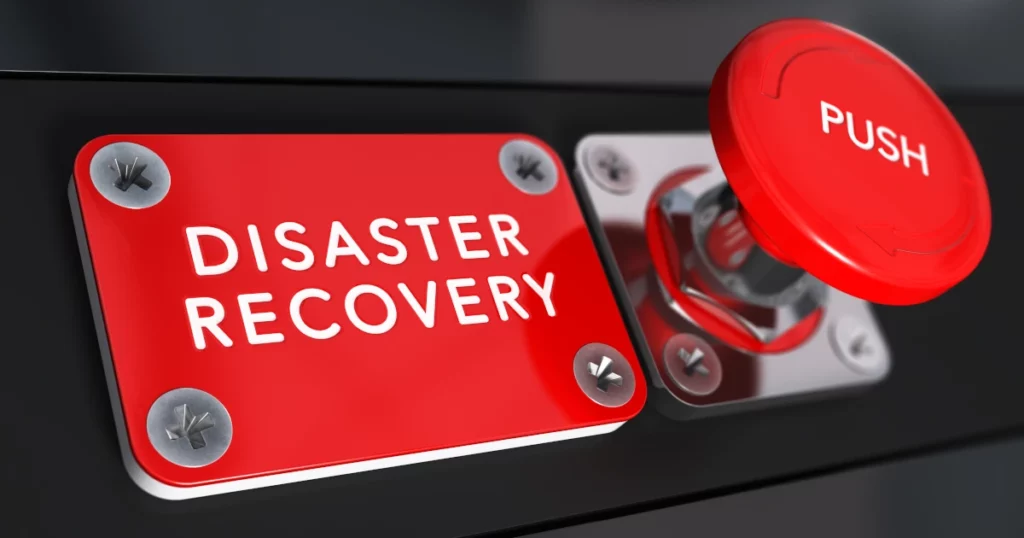
A Common Scenario
Once upon a time, there was a renowned civil engineering firm that excelled in constructing magnificent structures. Their expertise and meticulous attention to detail made them highly sought-after by clients worldwide. However, they underestimated the significance of having a disaster recovery plan specifically addressing cybersecurity risks.
One day, hackers targeted the firm’s vulnerable IT systems, exploiting security loopholes and infiltrating their systems to access sensitive data. The cyberattack was swift and devastating, compromising critical project blueprints, financial records, and client information. Panic ensued as the firm realized the gravity of the breach, but their lack of a disaster recovery plan left them helpless.
Unable to recover their compromised data promptly, the firm lost the trust of their clients. Reputational damage spread like wildfire, tarnishing their once-pristine image. Project delays, lawsuits, and financial repercussions followed suit, as clients sought reliable and secure alternatives for their engineering needs.
The firm’s failure to address cybersecurity risks through a comprehensive disaster recovery plan proved catastrophic. With their reputation irreparably damaged, they could not regain their footing in the industry and eventually succumbed to bankruptcy.
This cautionary tale emphasizes the critical importance of having a disaster recovery plan tailored to cybersecurity risks. In an increasingly digitized world, businesses must be proactive in protecting their sensitive data, preserving their reputation, and safeguarding their future.
Disaster Recovery Planning: How to Begin
Creating a disaster recovery plan (DRP) is essential for any business to mitigate risks and ensure business continuity in the face of unexpected events. This plan outlines the steps to be taken in the event of a disaster, such as natural disasters, cyberattacks, or system failures. Without a disaster recovery plan, businesses are vulnerable to various risks that can severely impact their operations, reputation, and financial stability. In this response, I will provide an overview of the steps to create a disaster recovery plan and highlight the risks associated with not having one.
Step 1: Risk Assessment
The first step is to conduct a comprehensive risk assessment to identify potential threats and vulnerabilities. This involves analyzing various factors, including physical infrastructure, IT systems, data security, and personnel. Risks can range from natural disasters like earthquakes and floods to technological risks such as power outages or cyber threats.
Step 2: Business Impact Analysis
Performing a business impact analysis helps determine the potential consequences of a disaster on different aspects of the business. This analysis includes identifying critical business functions, prioritizing processes, and estimating the financial and operational impacts of disruptions. It helps in establishing recovery time objectives (RTOs) and recovery point objectives (RPOs), which define the acceptable downtime and data loss limits.
Step 3: Develop a Plan
Based on the risk assessment and business impact analysis, develop a detailed plan that outlines the steps to be taken during and after a disaster. The plan should include emergency response procedures, roles and responsibilities of employees and partners, communication protocols, backup and recovery strategies, and post-recovery actions. It should be documented, regularly updated, and accessible to all relevant stakeholders.
Step 4: Data Backup and Recovery
Implement a robust data backup strategy to ensure critical data is regularly and securely backed up. This can involve both on-site and off-site backups, utilizing technologies like cloud storage or off-site servers. Define recovery procedures for restoring data and systems to minimize downtime and data loss. These backups and the ability to restore them should be regularly tested in order to make sure that the data is recoverable after an actual event.
Step 5: Test and Training
Regularly test the disaster recovery plan (DRP) to identify potential gaps or weaknesses and validate its effectiveness. Conduct simulated drills and scenarios to ensure employees understand their roles and responsibilities. Training programs can also help enhance employee awareness and preparedness for disaster situations.
Step 6: Communication and Coordination
Establish clear communication channels and protocols to ensure seamless coordination among employees, stakeholders, and external parties during a disaster. Designate specific personnel responsible for initiating and managing the recovery process and establish contact lists with key stakeholders, including employees, vendors, customers, and relevant authorities.
Step 7: Regular Review and Update
Disaster recovery plans should not be static documents but rather evolve with the changing business environment and emerging threats. Regularly review and update the plan to incorporate lessons learned from testing, technological advancements, and organizational changes. This ensures the plan remains effective and aligned with the evolving risks.
Now let’s discuss the risks associated with not having a disaster recovery plan (DRP):
- Downtime and Productivity Loss: Without a plan in place, businesses face prolonged downtime in the event of a disaster. This can lead to significant productivity loss, missed deadlines, and dissatisfied customers. The inability to resume operations promptly can also result in revenue loss and damage to the company’s reputation.
- Data Loss: A lack of data backup and recovery procedures leaves businesses vulnerable to irreversible data loss. This can have severe consequences, including compromised customer information, legal liabilities, and potential compliance violations.
- Financial Implications: Disasters can lead to unexpected costs, such as equipment replacement, repairs, and legal fees. Without a recovery plan, businesses may struggle to handle these expenses, resulting in financial strain and even bankruptcy.
- Regulatory Non-Compliance: Many industries have regulatory requirements regarding data protection, privacy, and business continuity. Failing to comply with these regulations due to a lack of a disaster recovery plan can result in fines, legal actions, and reputational damage.
- Customer Trust and Reputation: When a business fails to recover swiftly from a disaster, it erodes customer trust and damages the company’s reputation. Customers may seek alternatives, and the negative word-of-mouth can have long-lasting effects on the business.
- Competitive Disadvantage: In today’s fast-paced business environment, customers expect uninterrupted services. A business without a disaster recovery plan is at a significant disadvantage compared to competitors that can ensure continuous operations, leading to loss of market share.
- Legal and Compliance Risks: In the absence of a disaster recovery plan, businesses may face legal challenges and compliance issues. For example, failing to protect customer data adequately can result in legal actions and reputational damage.
In conclusion, creating a comprehensive disaster recovery plan is crucial for businesses to mitigate risks associated with unforeseen events. Failing to have a plan exposes businesses to potential downtime, data loss, financial implications, legal non-compliance, damage to reputation, and competitive disadvantages. By following the steps outlined above, businesses can increase their preparedness, minimize the impact of disasters, and ensure continuity in the face of adversity.
SUURV Technologies, a leading managed service provider, can help your business develop a disaster recovery plan. Simply call (210) 874-5900 or fill out our contact form by clicking here.
Get Help Now!
We bring a laser focus to the three most critical functions of your company.
1. Business Operations

SUURV would love to talk with you about our vCIO and TAM support. It's the solution you've been searching for.
2. IT Infrastructure

THERE'S NEVER a one-size-fits-all approach. We implement custom solutions that scale with your growth.
3. Employee Support

You spent a lot of time building your team. We work around the clock to support them.

















